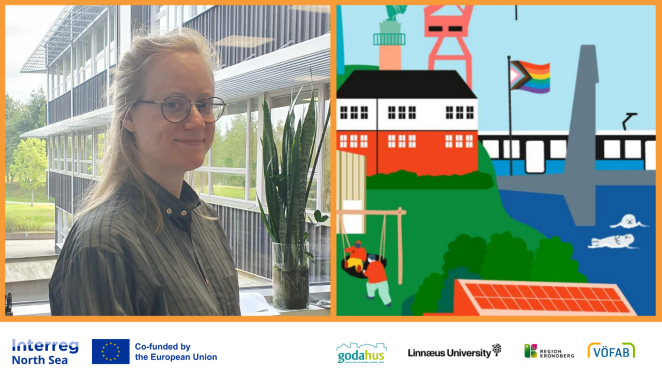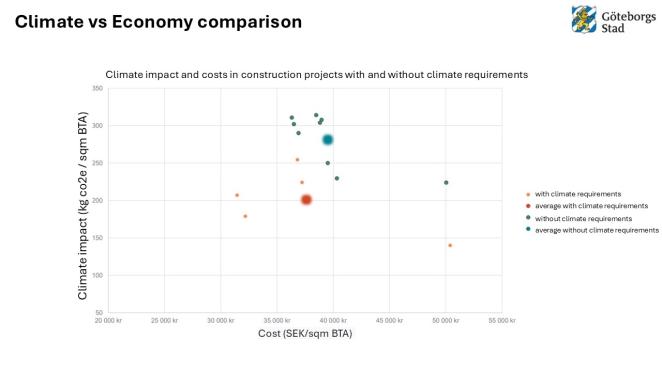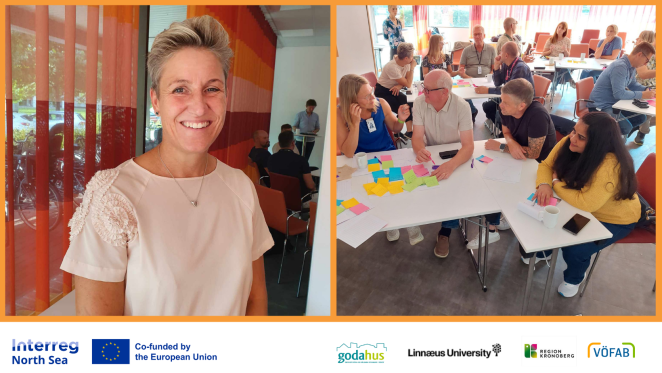Circular Trust Building in Växjö has been inspired by experts from Gothenburg in the starting phase of upcoming pilot project. As a frontrunner in circularity in construction, the City of Gothenburg aims to lead the development towards climate neutrality, where reuse in this sector plays a key role.
During two recent CTB workshops with local stakeholders, our Swedish partners from Godahus and Växjö Linnaeus Univesity profited from this expertise and noted some success factors for circular projects in the construction industry.

Anna Risell, City of Gothenburg
Climate vs Economy
One common argument against increasing material reuse in construction is the belief that it drives up project costs. But is this true or a misconception? Anna Risell from Gothenburg’s Urban Planning Department shed some light on the subject. “Gothenburg has set ambitious goals to lead the way in the climate transition,“ she explained.
“The city's 2024 budget explicitly states: ’In times of economic challenges, welfare and the climate transition must be prioritized.’ One key strategy is to enhance reuse and adopt more circular practices in the construction sector, all aimed at achieving the city’s environmental goal of net-zero climate impact by 2030.”

Translation of Economy - Climate Comparison from Gothenburg
Cost neutral, carbon neutral
Gothenburg has already completed several large-scale circular material use projects, and today, the city can draw valuable lessons from them. Anna added: “The data shows that imposing climate-related requirements and implementing material reuse initiatives do not inherently increase project costs when compared to conventional construction projects.”
Financial evaluations of various construction projects reveal that integrating climate and reuse criteria does not result in higher costs. However, having an initial investment fund is beneficial during the early stages of material reuse efforts. Such a fund provides the necessary budget to experiment and learn, allowing the flexibility to fine-tune a circular approach. Looking ahead, Gothenburg aims to make material reuse cost-neutral, meaning that it should not inflate the overall project budget. The real payoff comes in the form of a reduced environmental footprint, decreased extraction of virgin materials, and minimized waste—steps that all sectors will need to embrace moving forward towards carbon neutral.

Karin Hallingström from Sweco shares some succes factors.
Sharing success factors
Karin Hallingström, consultant at Sweco, has been involved in several of the city’s construction projects aimed at increasing material reuse and creating more circular models. According to Karin, successful projects have the following factors:
- Access to interim storage close to the projects – To facilitate reuse, it's important to have storage facilities nearby.
- Clear division of responsibilities – Who is responsible for keeping track of what’s in storage? A clear structure is essential.
- Efficient transportation – Reused materials often lack packaging, agreements with transporters are needed to handle this.
- Well-functioning logistics systems – Creating efficient systems for the collection and management of reused materials is central.
- Places for sorting and refining – There is a need for specialized facilities where reusable products can be sorted and refined.
- Collaboration between various stakeholders – Close cooperation between clients and diverse contractors is crucial.
This is all valuable information for the CTB partners and stakeholders in Växjö and for the consortium as a whole. We will continue to benefit from this shared knowledge and best practices at the upcoming partner meeting in Lille this November. Watch out for more!
